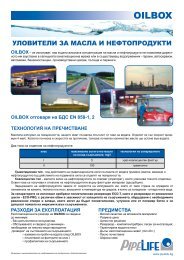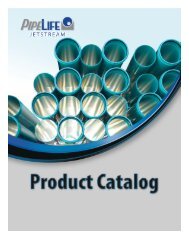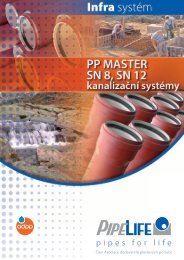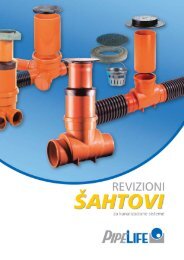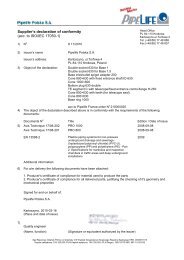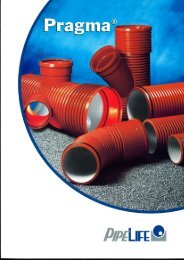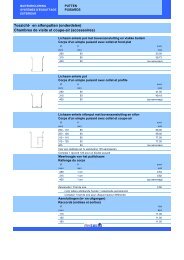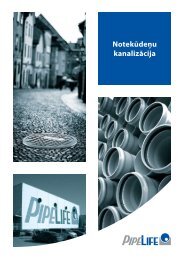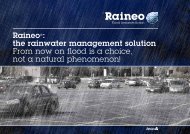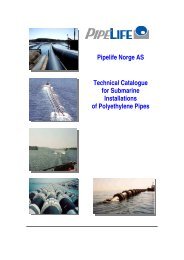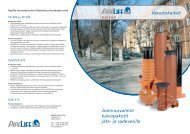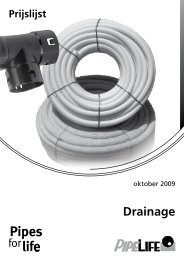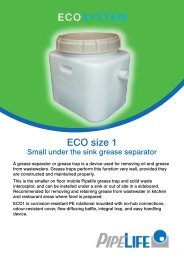You also want an ePaper? Increase the reach of your titles
YUMPU automatically turns print PDFs into web optimized ePapers that Google loves.
6.2. CapacityThe incoming capacity is defined by one or more of the following components:● Drainage waters (Qd) – with regard to the pumping, the quantity of drainage waters is usually less. In case of pervious soil. . and when the drainage system is situated above the level of the underground waters, the specific quantity of drainage waters. . must be defined on the basis of hydro-geological study.● Rain water (Qr) – Depends on the accepted pumps’ work mode, the intensity of the flow rate shower, the drain surface and. . the flow coefficient.● Waste waters (Qi)- Waste waters capacity is defined on the basis of the facilities connected into the system, producing waste. . waters in the building and the simultaneousness of draining from them. Water quantity for which the pump is calibrated should. . not be less than the maximal hour quantity of the total water inflow.The total incoming capacity (Q) for waste waters is the sum of the three indexes:Q = Qd + Qr + Qi (l/s)6.3. PressureThe general pressure of the pumps depends on the height of pumping and the hydraulic pressure losses in the pipelines. The pressurein the pump must compensate the different resistances in the pipe system. The general pressure varies according to the waterquantity in the system. As a matter of principle the counter-pressure consists of three elements:• Geodesic pressure• Pressure losses in fittings• Pressure losses in straight pipe sections – pressure pipeline6.4. VelocityThe fluid velocity is defined according to the requirements for minimal and maximal velocity.The minimal fluid velocity for the carrying pipes is:● Vertical: 1 m/s (recommended by Grundfos) - to avoid problems with depositing● Horizontal (internal and external): 0,7 m/s - to avoid problems with depositingIn order to avoid loss of pressure, the water velocity must not exceed 2,3 (2,5) m/s.6.5. Pump’s wearing out factorsThe availability of sand in the waste waters leads to low, usually 0.002 and 0.003 volume %. But it is possible to be increased at itspeak during heavy rains and snow melting. For such applications it is appropriate to plan a reservoir for sand separation from thegeneral waste waters.The pumps’ behavior in abrasive environments depends on the availability of quartz and silicate sand. When there is high contentsof sand the liquid density increases, respectively the necessary engine power increases too. Usually 30% reserve is planned in thenominal power.Pump’s wearing out factors are the following:● Availability of sand;● Sand quality;● Pump’s materials;● Impeller type.Pump’s wearing out can be minimized with the usage of durable materials and appropriate choice of construction.6.6. Draw tankThe draw tank of the sewage pump station plays the role of equalizer between the inflow during the different hours of the 24-hourperiod and the pumps’ capacity.22<strong>Pipelife</strong>www.pipelife.com



